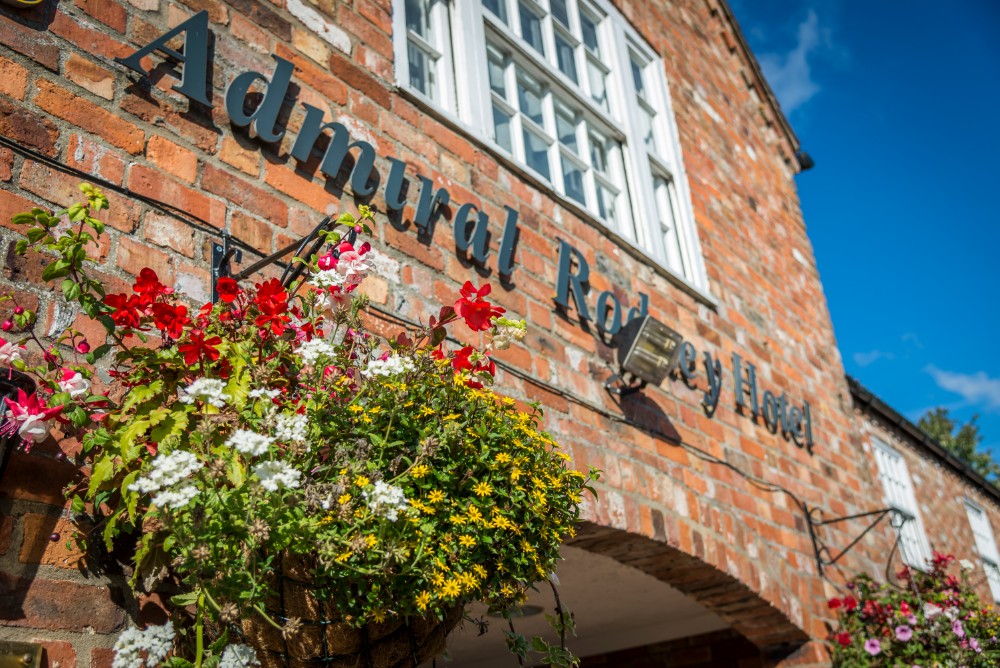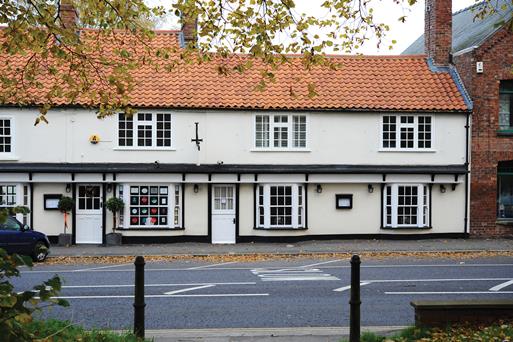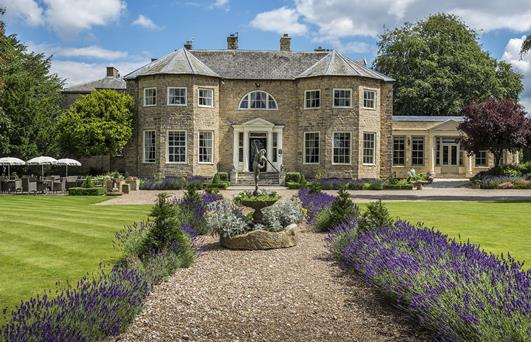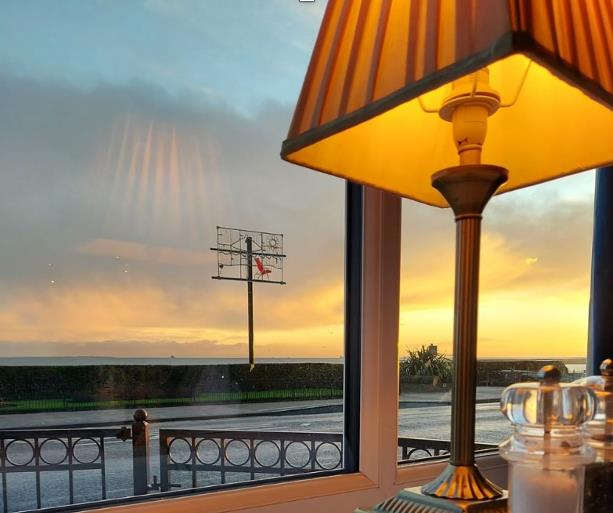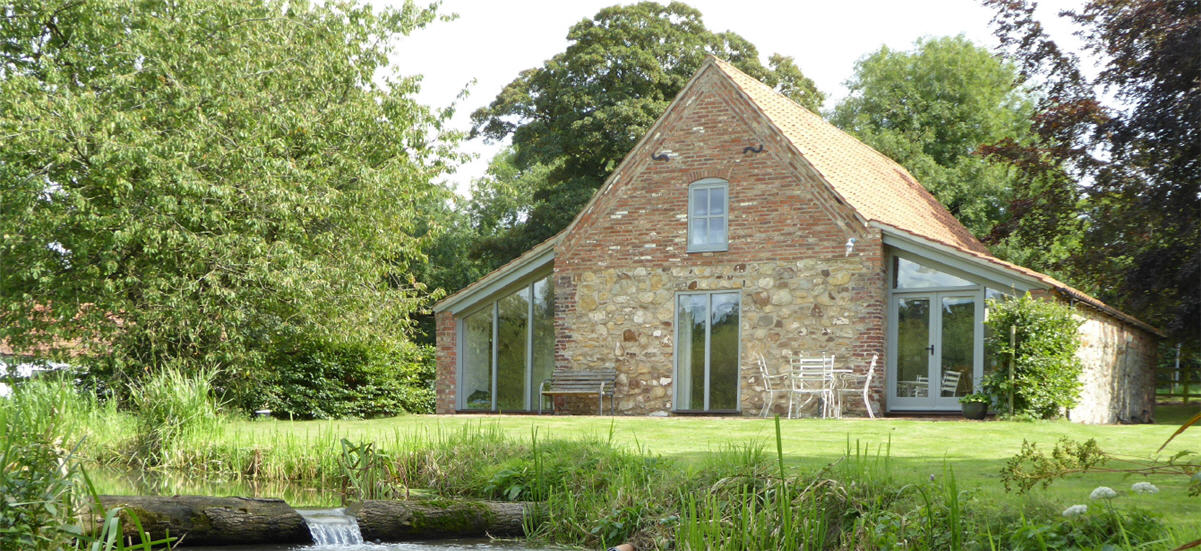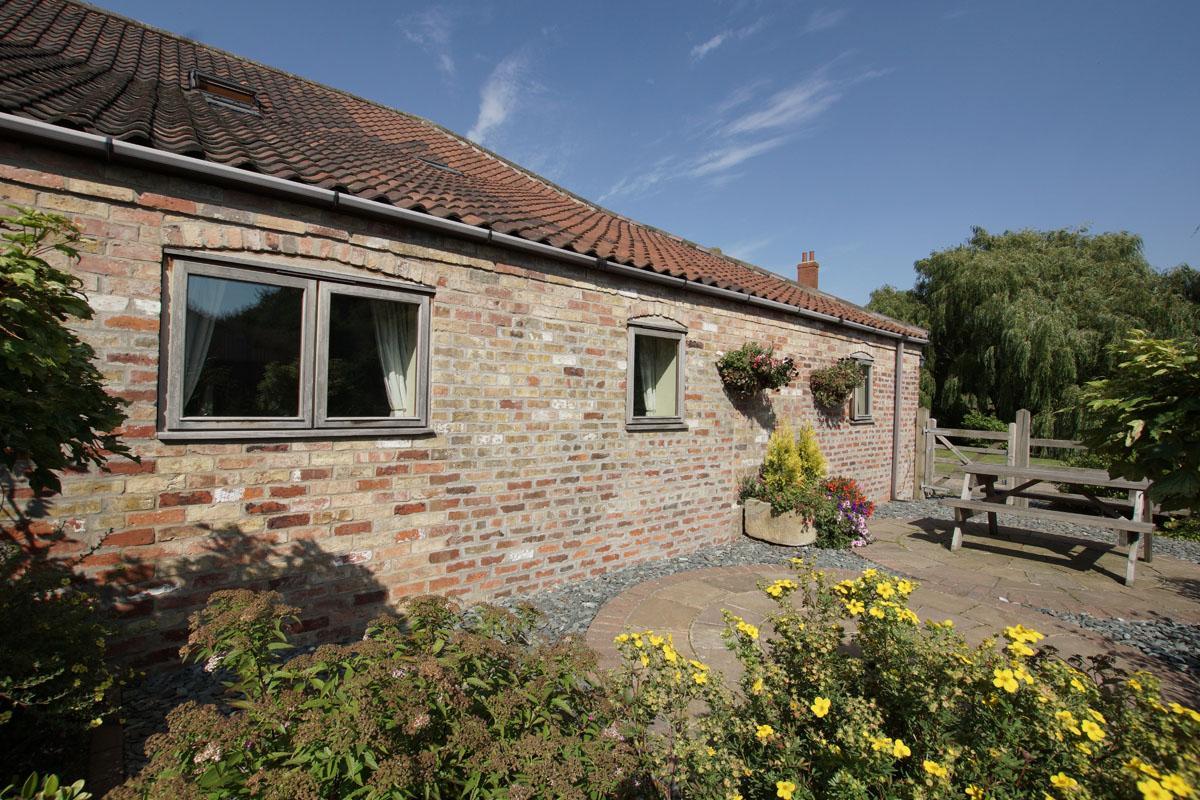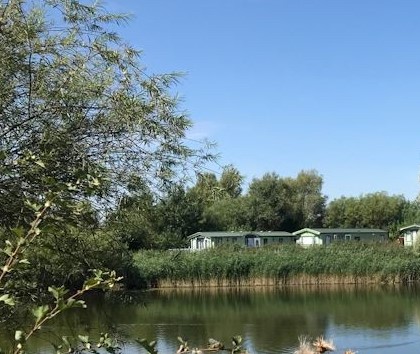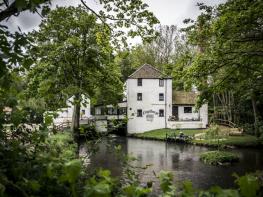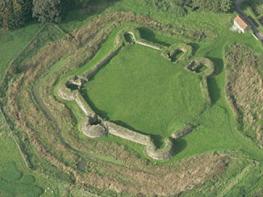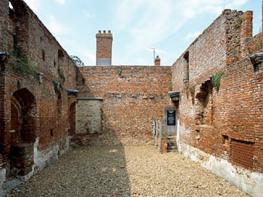In the grounds of a centuries-old mill house outside the village of Conington on Bain, Mill…
Around Donington on Bain

A scenic walk through the Wolds west of Louth
8 miles (12.9kms)
About the walk
Lincolnshire is well known as one of the foremost English counties for food production. The fertile soils of the Fens in the south support vast and seemingly endless fields of arable crops, such as potatoes, onions, cabbages and sugar beet. The county is the leading producer of cereals and it's also the world's largest producer of daffodils.
The Tastes of Lincolnshire initiative aims to promote local produce and its members include tea rooms, B&Bs, pubs and restaurants, so look out for the stickers and leaflets.
The traditional Lincolnshire sausage
This walk starts and finishes near The Black Horse Inn in Donington on Bain, and there's no better place to try the county's produce after a bracing ramble. The pub specialises in Lincolnshire sausages, traditionally made with coarse ground pork and flavoured with salt, pepper and sage – though other varieties might feature pork with apples or venison with red wine.
In villages and market towns such as Louth, Horncastle, Boston and Spalding, a visit to the local baker will reveal yet another subtle variation of the famous Lincolnshire plumbread, delicious spread with butter and accompanied by a cup of strong tea. Also look out for Grantham gingerbread and Lincolnshire curd tart. Other regional recipes include Lincolnshire dripping cake, traditionally eaten for lunch during harvest time. Lincolnshire's hand-made poacher cheese has long been famous, and recently sheep's milk products have been reintroduced, with herds of ewes now generating a growing supply of cheese, milk and yogurt. Another return to the county's pastures are Lincoln Reds, a traditional breed of beef cattle with a handsome deep-red coat.
The county is also well-known for haslet – a loaf of cooked, minced pig's offal eaten cold – and chine. Stuffed chine harks back to an 18th-century way of cooking ham, peculiar to Lincolnshire, whereby gashes in the ham are stuffed with parsley, mint, thyme and other herbs before boiling. It is traditionally served cold, sliced, with vinegar and a salad. Finally, don't forget about a drink to accompany all this decent food, and what better than Batemans 'good honest ales', brewed at Wainfleet.
Walk directions
Walk out of the village northwards, past the Norman church and the post office, on to Mill Road. At the first junction turn right, signposted 'Hallington' and 'Louth', then in a few paces go left, over a stile. Walk along the bottom of successive fields, with the River Bain on your left and the lofty Belmont Transmitting Station dominating the skyline further west. After 0.75 miles (1.2km), and having passed a fishing lake, you reach a footbridge.
Cross over the footbridge to walk around the perimeter of Biscathorpe's isolated little church, then continue past a house and across a lane to cross another footbridge ahead. Head half left across the bumpy outline of a deserted medieval village towards the top of the hill and go through a gate for a path through a small plantation. Turn right on a lane and walk along this for 550yds (503m).
Go right for a signposted public footpath down the side of disused workings, then left across a wide field, aiming for the far corner down by the stream. Go over a footbridge, then follow the farm track round to the left before crossing another footbridge and walking across a meadow to reach the lane at Gayton le Wold.
Turn right and walk along the lane past Manor Farm's whitewashed buildings. In 0.5 miles (800m), where the lane bends right, go left on a public bridleway. Fork right into the field at the top and follow the obvious route alongside and then across huge ploughed fields. Continue above Glebe Farm until you reach a lane.
Go straight over and continue directly ahead through more open fields, with the former military satellite dishes and mast over to your left. At the very end go right and walk down the lane to the junction at the bottom, by the former railway station.
Turn left, over the old bridge, then go right at the next junction (signposted 'Market Stainton'). After 0.25 miles (400m) turn right on a permissive footpath to rejoin the Viking Way. Go past the woods of Fox Covert and along a field-edge until you meet another footpath. Turn right to cross the dismantled railway once more.
On the far side, where the track hairpins off to the farm on the right, go straight on for a clear route through several fields back to Donington. At the very end swing right along a short lane to emerge opposite The Black Horse Inn.
Additional information
Bridleways, field paths and lanes, several stiles
Rounded hills and shallow river valley
Plenty of off-lead potential on tracks and lanes
OS Explorer 282 Lincolnshire Wolds North
Main Road, Donington on Bain
None on route (nearest in Louth)
WALKING IN SAFETY
Read our tips to look after yourself and the environment when following this walk.
Find out more
Also in the area
About the area
Discover Lincolnshire
Much of the fenland around the Wash has been drained of its marshes and reclaimed as highly productive farmland. Further north, the coastline, with its sandy beaches, has been developed to accommodate the holiday industry, with caravans, campsites and the usual seaside paraphernalia. The main resorts are Skegness, Mablethorpe, Cleethorpes and Ingoldmells. Inland, the chalky margin of the Lincolnshire Wolds offers an undulating landscape of hills and valleys, designated as an Area of Outstanding Natural Beauty.
Lincoln, the county town, is dominated by its magnificent cathedral. Most of interest in the city is in the uphill area, Steep Hill, ascending from the River Witham; the Bailgate spanned by the Newport Arch, and the Minster Yard with its medieval and Georgian architecture. Boston, on the banks of Witham, was England’s second biggest seaport in the 13th and 14th centuries, when the wool trade was at its height. There are market towns all over the county still holding weekly markets, including Barton-upon-Humber, Boston, Bourne, Brigg, Crowland, Gainsborough, Grantham, Great Grimsby, Holbeach, Horncastle, Long Sutton, Louth, Market Rasen, Scunthorpe, Sleaford, Spalding (the centre of the flower industry), and the elegant Edwardian spa resort of Woodhall Spa.
Nearby stays
Restaurants and Pubs
Nearby experiences
Recommended things to do
Why choose Rated Trips?
Your trusted guide to rated places across the UK
The best coverage
Discover more than 15,000 professionally rated places to stay, eat and visit from across the UK and Ireland.
Quality assured
Choose a place to stay safe in the knowledge that it has been expertly assessed by trained assessors.
Plan your next trip
Search by location or the type of place you're visiting to find your next ideal holiday experience.
Travel inspiration
Read our articles, city guides and recommended things to do for inspiration. We're here to help you explore the UK.

